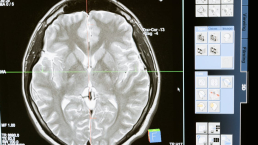
MDPI Papers Cited in the News: May 2024
Throughout May, MDPI research has been cited in 809 posts from prominent news outlets, such as CNN and The New York Times. In this month’s Cited in the News round-up, we discover the excellent role that physical activity has on the quality of life of cancer patients and how it can improve cancer survival rates. We also see how the mindful practice of ‘letting go’ can help with mental health and have an insight into the latest cancer detection tools. Finally, we look at the effect of El-Nino warming, and how it’s causing widespread coral bleaching in the Southern Mexican Pacific.
Coral bleaching in the pacific

The New York Times: Heat Stress is Hitting Caribbean Reefs Earlier Than Ever this Year
Global reefs are rich, biodiverse ecosystems in the sea that are extremely sensitive to changes in temperature. With sea temperatures rising due to climate change, coral reef bleaching has become an increasingly pressing issue. A recent article published in MDPI Oceans and cited in The New York Times discusses the effect of the temperature rise occurring during the 2023 El Niño event in the coral reefs of the East Pacific Ocean.
In the article, they find that high temperatures caused ‘extensive coral bleaching’ and a significant reduction of fish and echinoderm—animals like starfish and sea urchins. Coral is an important food source for the animals living in the ecosystem. The article discusses how the death of the coral during the El Niño disruption caused significant displacement of animals and a reduction in biomass.
Coral bleaching effects like this one have taken place before. The article highlights the importance of implementing strategies to reduce coral bleaching by discussing the detrimental effects of coral reef death. Preserving biodiversity is a matter of ever-growing concern and imperative for life on Earth. Habitats rich in biodiversity give rise to healthy and thriving ecosystems. To read more about the importance of preserving the diversity of species, click here.
Can physical activity help reduce cancer?
CNN: Your level of physical activity could be a vital sign
Cancers: Physical activity and cancer care—a review
Everyone knows that physical activity is good for us. The surge of endorphins that helps to boost mood in combination with the many physical benefits makes exercise an excellent candidate to prevent feeling unwell.
But just how much can it help during recovery from serious illness, such as cancer? A recent review published in Cancers provides enlightening data showing that different types of physical activity can help with the effects of having cancer and cancer therapy. This includes fatigue and other mental health problems such as anxiety and depression. Physical activity also showed to increase the quality of life in patients with cancer. Aligning with this conclusion, they state that ‘sedentary time negatively affects [the] quality of life and well-being of cancer patients.’
Interestingly, the review highlights that physical exercise has also been shown to reduce the risk of mortality and lead to longer survival of patients with cancer. These data could be used to support clinicians in the design of treatment plans to help reduce the risk of recurrence, as well as increase the quality of life of patients.
The review was cited in a CNN news article which discussed the importance of exercise, and how essential it is to ‘obtain optimal health’. They also mention that more active people have lower healthcare costs compared to those who lead more sedentary lifestyles.
Both articles show how exercise can not only be used as an excellent preventative tool for the disease but can also play a significant role in healing—both from a physical and mental health perspective. Exercise can also be practiced as a form of mindfulness. Studies have shown how mindfulness can help to lower stress and has even been linked to improved immune function. These benefits further highlight the brilliant effects that exercise has on our health.
Rumination and replaying conversation in human behavior
Forbes: A psychologist unpacks ‘replaying conversations’ compulsion
Behavioral Sciences: Letting go as an aspect of rumination and its relationship to mindfulness, dysphoria, anxiety, and eudemonic well-being.
An article recently published in Forbes breaks down how the habit of overplaying conversations in one’s head can lead to negative thought patterns. They discuss how this could lead to rumination, a symptom of many mental health issues involving the overthinking of negative thoughts and feelings in a repetitive pattern. This can be unhelpful and can have negative consequences on one’s mental health.
The CNN article cites research published in Behavioral Sciences, published by Caswell et al. The original article analyses the role of ‘letting go’ in helping mental health and patterns of rumination in college students. Letting go is an essential part of being mindful and is a helpful tool for dealing with mental health. They found that not being able to let go increased the risk of anxiety and feelings of dysphoria and is a powerful contributor towards having intrusive thoughts.
The paper emphasizes the importance of analyzing mindfulness tools, such as letting go. Research such as this helps to understand the impact these tools have on mental health and how they can help mood disorders, such as anxiety and depression.
Tools for early detection and prevention of cancer

The Atlantic: Cancer Supertesting is Here
MDPI Epigenomes: Opportunities for Early Cancer Detection: The Rise of ctDNA Methylation-Based Pan-Cancer Screening Technologies
Methods to detect cancer have become increasingly precise. Detecting cancer early is one of the best ways to improve overall survival rates. However, this is also a challenge. An Editor’s Choice review published in Epigenomes runs through the most up-to-date multi-cancer early detection technologies.
The article, cited in The Atlantic gives a run-down of the different types of liquid biopsy methods. Liquid biopsies are methods of detecting cancer by taking a sample of blood or urine and looking for specific markers that indicate there might be cancer present. The presence of tumor-circulating DNA, or ctDNA, is a key biomarker that is currently used to detect cancer. The article provides an in-depth review of the different ways currently used to detect this biomarker and their pros and cons.
It also outlines the challenges of current screening methods to detect early-stage malignancies. These challenges include the low specificity for a limited number of cancer types.
But with molecular biotechnologies becoming increasingly advanced, we look towards a hopeful future for the early detection and diagnosis of cancer. This would aim to ultimately increase overall cancer survival rates.
MDPI publishes a range of different research, from mental health to environmental sciences. To discover more, see our full list of journals.










